12 Items Every Cat Owner Should Keep On Hand For Emergencies
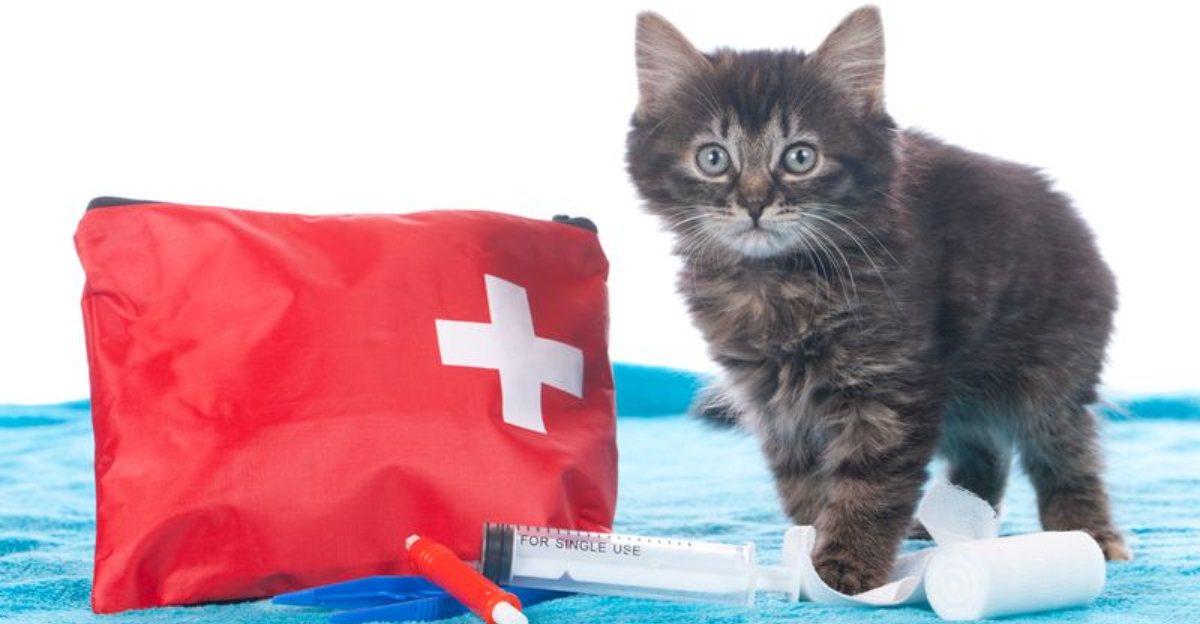
When disaster strikes, our feline friends depend on us to keep them safe. Emergencies rarely announce themselves, which is why preparation makes all the difference between panic and proper care.
Whether facing natural disasters, sudden illness, or unexpected accidents, having the right supplies ready can save precious minutes – and possibly your cat’s life. Here’s what every responsible cat owner should have ready before trouble arrives.
1. Cat Carrier That’s Always Ready
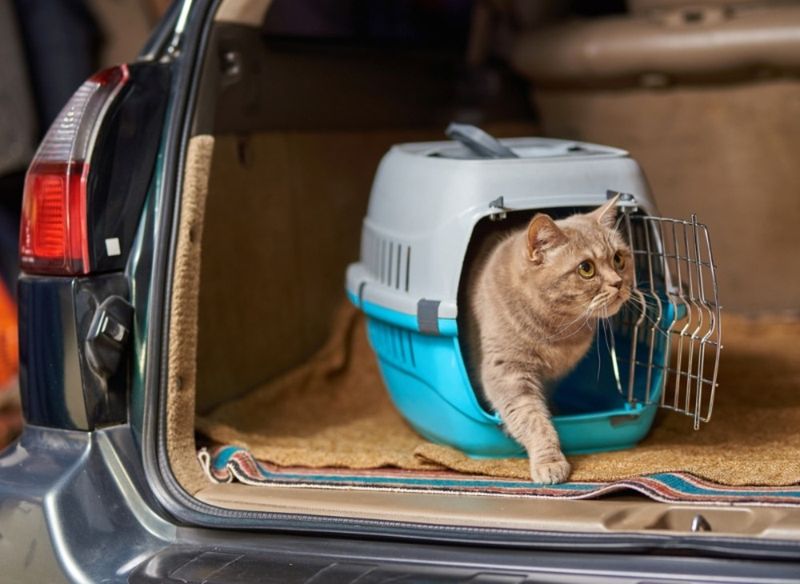
Nothing hampers a quick evacuation like frantically searching for your cat’s carrier while smoke alarms blare. A sturdy carrier should remain assembled and easily accessible, not buried in the garage or attic.
Choose one with both top and front openings for easier loading of reluctant cats. Line it with a familiar-smelling towel or blanket that you change regularly. Some cats fear carriers because they associate them with vet visits, so occasionally place treats inside to create positive associations.
For multi-cat households, have one carrier per cat – trying to combine stressed cats during emergencies often leads to fighting and injury.
2. Waterproof Container Of Medical Records
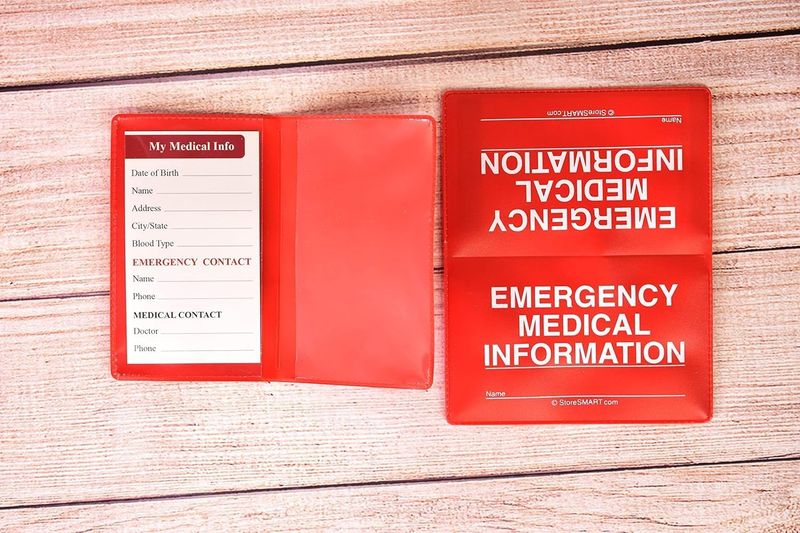
During emergencies, you might need to evacuate to unfamiliar veterinarians who have no history with your cat. Keeping updated vaccination records, medication lists, and treatment histories in a waterproof container can save critical time.
Include clear photos of your cat from multiple angles – these help with identification if your pet escapes during chaos. Add your vet’s contact information, any specialty veterinarians your cat sees, and nearby emergency clinics that accept cats.
Many cat owners overlook including feeding instructions and behavioral notes, which become crucial if someone else must temporarily care for your pet during extended emergencies.
3. First Aid Kit Tailored For Feline Needs
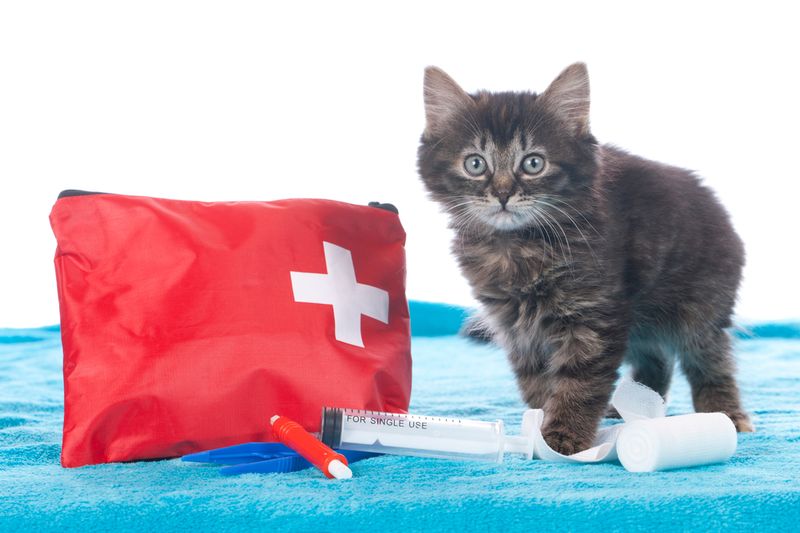
Regular human first aid kits lack many essentials for cat emergencies. Build a specialized kit including gauze pads, self-adhesive bandage wrap (never use sticky adhesive tape on fur), blunt-tipped scissors, tweezers, and a digital thermometer.
Add styptic powder to stop bleeding from torn claws, saline eye wash for flushing irritants, and disposable gloves. Even calm cats may become aggressive when injured, so include a small towel for gentle restraint.
Store medications your vet has prescribed specifically for your cat’s ongoing conditions, along with written instructions for proper dosing in case someone else needs to care for your pet.
4. Flashlights And Laser Pointer
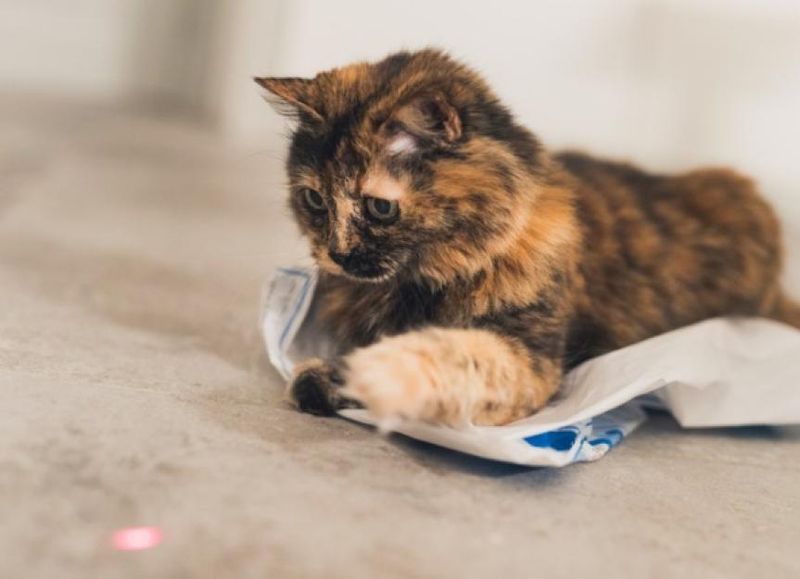
Power outages make finding a hiding cat nearly impossible without reliable light sources. Keep multiple flashlights with fresh batteries in your emergency kit, including at least one headlamp that frees both hands for cat handling.
Surprisingly, a laser pointer becomes a valuable tool during emergencies. When cats hide in inaccessible spots during disasters, the familiar red dot often lures them into reach when treats and calls fail. This simple toy has helped countless owners retrieve terrified cats from under furniture or inside wall cavities.
Light-up collars or reflective gear also help locate dark-colored cats in dim conditions, though these should only be used on cats accustomed to wearing them.
5. Calming Pheromone Spray Or Diffuser
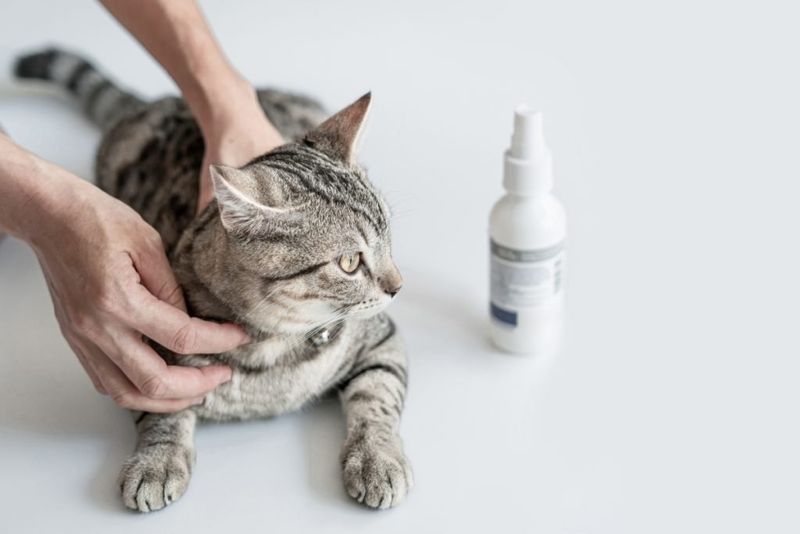
Synthetic feline facial pheromones help reduce stress-related behaviors during chaotic situations. These products mimic the natural compounds cats deposit when rubbing their cheeks against objects, creating a sense of security in unfamiliar environments.
The spray version works well for emergency kits – a few spritzes inside carriers or on blankets can significantly reduce anxiety during evacuations or vet visits. For cats with known anxiety issues, your veterinarian might also recommend keeping prescription anti-anxiety medication in your emergency kit.
Many cat owners report these pheromone products help prevent stress-induced behaviors like inappropriate elimination, excessive vocalization, and aggression when cats must leave their familiar territory during emergencies.
6. Disposable Litter Box Solution

Cats become stressed when unable to eliminate properly, making portable litter solutions essential for evacuations. Aluminum roasting pans make excellent disposable litter boxes – they’re lightweight, inexpensive, and stack efficiently in emergency kits.
Store a gallon-sized zip bag filled with your cat’s preferred litter. Cats often refuse unfamiliar litter during stressful situations, worsening anxiety and potentially causing elimination outside appropriate areas.
Include small garbage bags for waste disposal and disposable gloves for cleaning. This simple preparation prevents the common problem of cats developing urinary blockages or constipation during emergencies when they resist using makeshift or unavailable facilities.
7. Microchip Scanner App On Your Phone

Modern technology provides tools that previous generations of pet owners lacked. Several free smartphone apps can now read your cat’s microchip information when paired with an inexpensive RFID reader attachment.
During disasters, shelter systems become overwhelmed with displaced animals. Having the ability to prove ownership immediately can reunite you with your cat much faster than waiting for overworked shelter staff to scan and process records.
These apps also store your cat’s microchip number, registration details, and contact information that you can quickly share with rescue workers. Make sure your microchip registration information stays current with your latest phone number and address.
8. Battery-Powered Heating Pad
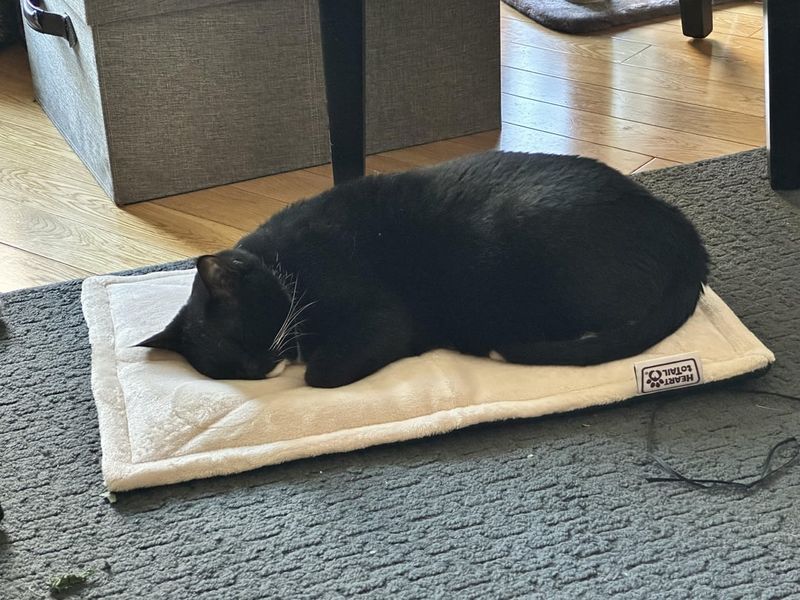
Cats struggle to maintain body temperature during power outages or when forced to stay in unheated environments. Hypothermia becomes a serious risk, especially for senior cats, kittens, or those with health conditions.
Battery-operated heating pads designed specifically for pets provide safe warmth without requiring electricity. Look for models with automatic shut-off features to prevent overheating and chew-resistant cords for safety.
Wrap these pads in a towel rather than allowing direct contact with your cat’s skin. During winter emergencies, this item can be lifesaving – cats with lowered body temperatures quickly develop dangerous complications including cardiac problems and respiratory distress.
9. Recent Photos Showing Distinctive Markings

Clear, current photographs showing your cat’s unique markings from multiple angles prove invaluable if separation occurs during emergencies. Digital photos can become inaccessible during power outages, so keep printed copies in your emergency kit.
Include close-ups of any distinctive features – unusual eye colors, coat patterns, scars, or other identifying characteristics. Many similar-looking cats get mixed up in shelter systems during large-scale disasters.
Update these photos annually as cats’ appearances change with age. Write your cat’s name, your contact information, and any critical medical needs on the back of each photo. This simple preparation dramatically increases reunion chances if your cat becomes lost during evacuation or disaster situations.
10. Rescue Alert Stickers For Windows And Doors
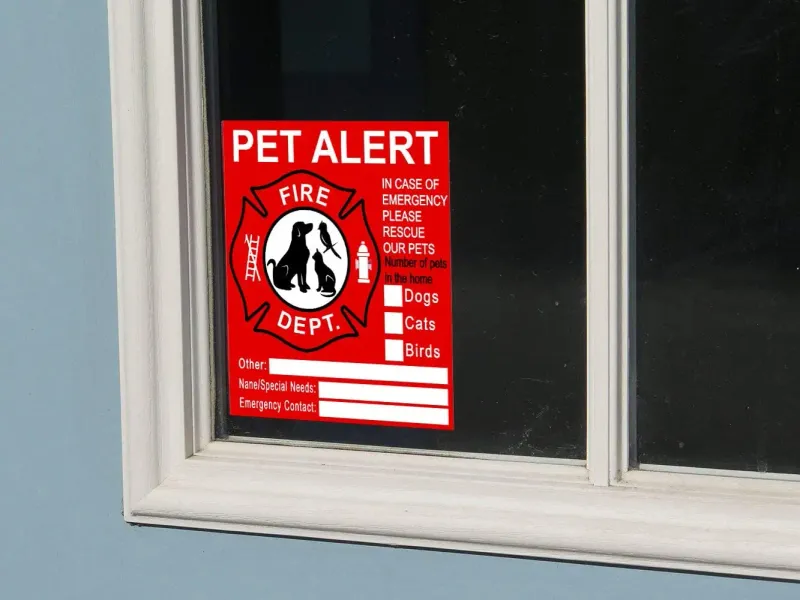
Rescue alert stickers placed on main entrances notify emergency responders about pets inside your home when you cannot. These bright decals typically include spaces to list the number and types of pets needing rescue.
Place stickers near front and back doors at eye level where firefighters will easily spot them. Update the information whenever your pet count changes. Some emergency services even provide free pet alert stickers through their websites.
During evacuations you manage yourself, write “EVACUATED” across these stickers so rescuers don’t risk their lives searching for pets no longer inside. This simple tool has saved countless animal lives by directing first responders to check for pets who might otherwise be overlooked.
11. Backup Medications And Prescription Information
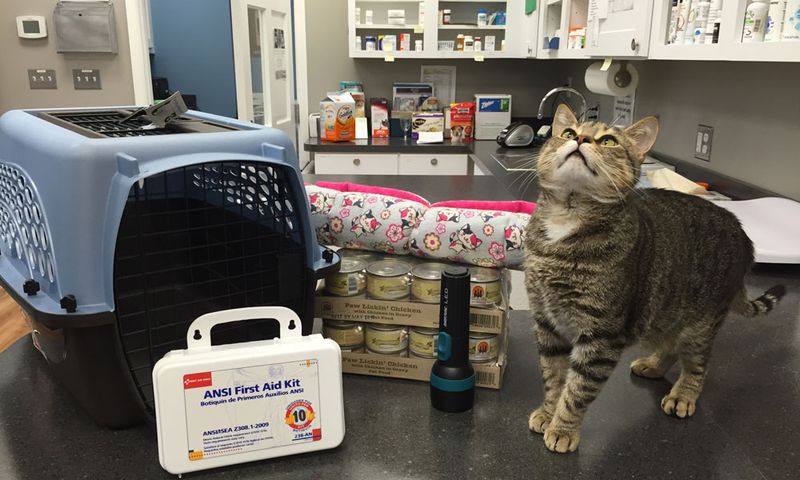
For cats with chronic conditions, maintaining medication continuity during emergencies can mean life or death. Keep at least two weeks’ supply of all prescription medications in your emergency kit, rotating stock to maintain freshness.
Store medications in waterproof containers clearly labeled with dosing instructions, including when to administer and how much. Include your veterinarian’s written prescription information showing the medication name (both brand and generic), dosage, and frequency.
This documentation helps you obtain emergency refills from unfamiliar veterinarians or pharmacies if evacuation takes you far from home. For refrigerated medications, have a small cooler with ice packs ready to grab during hasty departures.
12. Seven-Day Supply Of Food And Water
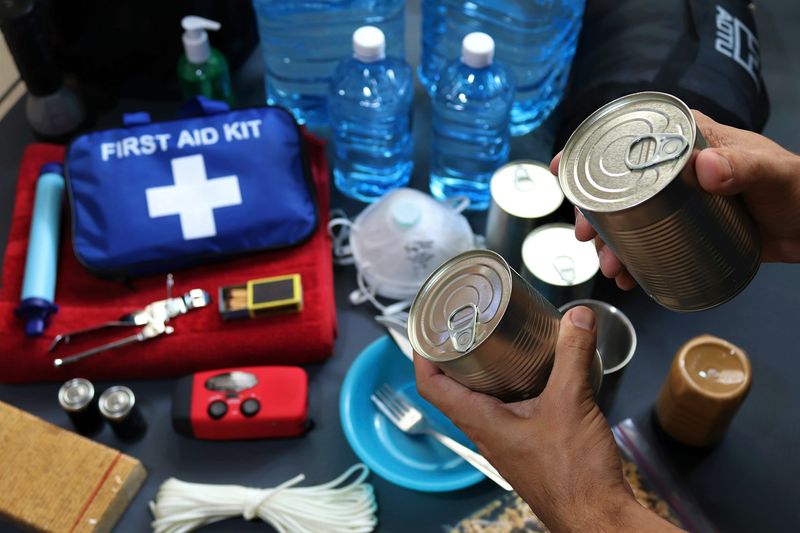
Emergency management experts recommend keeping at least a week’s worth of your cat’s regular food in sealed, waterproof containers. Rotating this supply every two months prevents staleness and ensures you’re never caught without fresh provisions.
For wet food eaters, include pop-top cans that don’t require can openers. Dehydrated cats quickly develop serious health problems, so store at least one gallon of bottled water per cat for a seven-day period.
Collapsible food and water bowls take minimal space in emergency kits while providing familiar feeding vessels during stressful situations. Remember to pack a manual can opener if your cat eats canned food requiring one.






